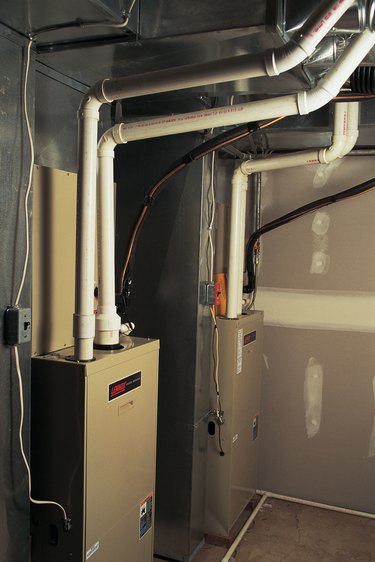Things You'll Need
Boiler stop-leak product
Garden hose
Screwdriver

Over time, your boiler experiences thermal stress. The stress on the iron of the boiler is caused by excessive heat near seams of the boiler or around parts, such as washers and plugs. Corrosion inside the boiler itself can also weaken the metal and cause it to rust and leak. Small leaks can easily be repaired with a stop leak product, but you will probably need to call a heating repairman for large leaks. You may need to replace the entire unit.
Step 1
Turn off your boiler by flipping the main power breaker to your boiler. Turn off the water that leads into your boiler by twisting the knob counterclockwise or to the left.
Video of the Day
Step 2
Wait at least two hours for the water inside the boiler to cool.
Step 3
Screw a garden hose to the bottom of the boiler at the drain tube. The hose will screw right on to the drain. Put the opposite end of the hose into a bathtub, utility sink or large bucket.
Step 4
Open the bleed valve with a screwdriver to remove at least a gallon of water from inside the boiler. You should remove at least enough of the water so the boiler can accommodate the leak repair solution. Some boilers may have a knob near the drain or a key that fits inside a slot that is located near the drain valve.
Step 5
Close the drain valve and remove the hose.
Step 6
Remove the safety valve on top of the boiler and pour 1 quart of stop leak product for every 110,000 BTU's of the boiler rating. The boiler rating should be listed on a tag on the side of the boiler.
Step 7
Open the water valve and allow the boiler to fill back up. The valve will not allow the boiler to overflow.
Step 8
Flip the power breaker back on to the boiler so the water will heat back up. The heat will activate the product and will seal the leaks. Maintain the heat until you are sure all of the leaks have been sealed.
Video of the Day